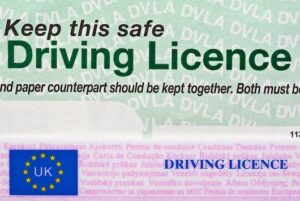What is Car Insurance Excess and How Does It Work?

What is Car Insurance Excess and How Does It Work?
When do you pay excess on car insurance? What is excess on car insurance?
In this essential guide, we’ll explain what excess is, how it works, and why you might want to pay more on your policy.
Long story short – paying a higher voluntary excess can sometimes result in lower car insurance premiums. But in this guide, we’ll also explore some other ways you may be able to lower the cost of your car insurance.
What is Excess In Car Insurance?
If you need to make a claim on your car insurance, you’ll have to pay an excess. It is essentially an amount of money that you will need to pay at the start of a claim.
This is usually made up of a ‘compulsory excess’ and a ‘voluntary excess’. The compulsory excess is set by your insurance company and can’t be changed or removed. The voluntary excess is an amount that you are able to lower or increase.
The excess you pay will vary from driver to driver. For example, drivers aged 17-24 will pay a higher excess than older drivers. This is because, statistically, younger drivers are more likely to be involved in an accident. The higher excess is to cover the increased risk of an accident.
The type of car you drive will also influence the amount of excess you pay. If you drive a high performance car you’ll generally pay a higher excess than you would if you drove a smaller car. This is because if high performance cars are involved in accidents, they tend to cost a lot to repair. The higher excess here is to cover the potentially higher repair costs.
The good news is that you’ll only ever have to worry about paying your excess if you ever have to make a claim on your policy.
What Is Voluntary Excess?
The voluntary excess is an amount you pay on top of the compulsory excess in the event of a claim. With the voluntary excess you can choose the amount you want to pay. By offering to pay a higher voluntary excess can sometimes help to reduce the amount you pay for your car insurance.
How Much Voluntary Excess Should I Pay On Car Insurance?
If you want to reduce the price of your car insurance, you might be tempted to pay a higher voluntary excess. Just like with the compulsory excess, you’ll only ever have to pay for your voluntary excess in the event of a claim.
But setting a higher voluntary excess than you can realistically pay is a big risk, even if it does result in a lower premium. Hopefully you will never be involved in an accident, but if you are you need to make sure that you will be able to pay the excess amount.
As an example, if you have a compulsory excess of £250 and have selected a voluntary excess of £200 then you would have to pay a total of £450 excess at the start of your claim.
So it’s important to be realistic when it comes to voluntary excess. The amount you save could be significantly lower than the amount you’d have to pay in the event of an accident.
How To Get Cheaper Car Insurance
Paying a high voluntary excess can result in cheaper car insurance. But there are other, less risky ways to drive down the cost of insurance.
If you want to save money on your car insurance, you could take an advanced driving course, or work to build up a no claims discount. The car you drive can also make a huge difference to the amount you pay for cover.
Head here to read our full guide to getting cheaper car insurance.





